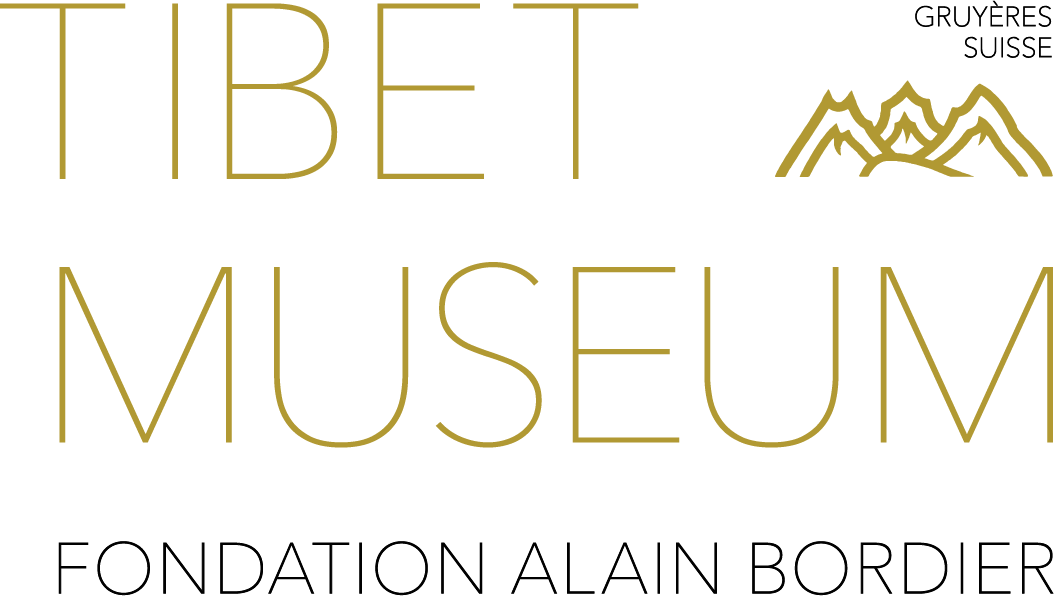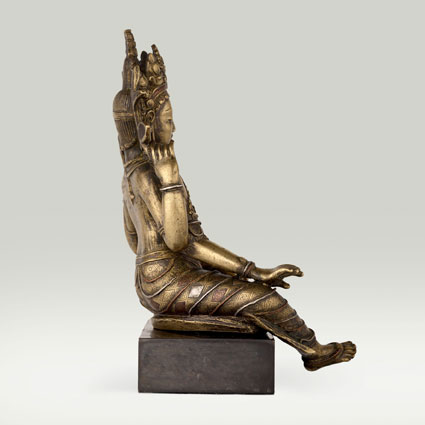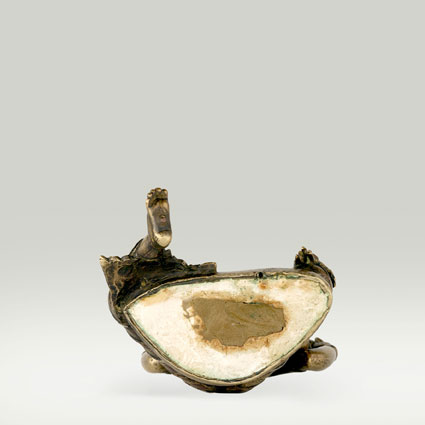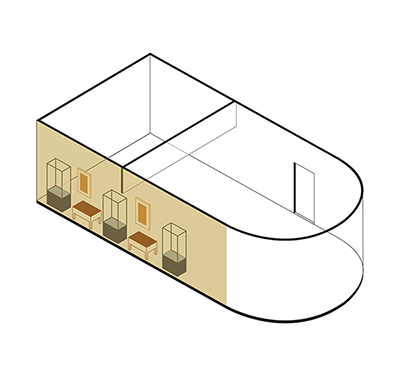ABS 110
Code: ABS 110
Country: Tibet
Style:
Date: 1250 - 1350
Dimensions in cm WxHxD: 12 x 19 x 7.3
Materials: Brass
Four-armed bodhisattva
This four-armed bodhisattva is seated in the attitude of ease with his right leg slightly extended forward, the foot touching the ground. His principal right hand rests on his knee, and with his upper right hand he holds a fly-whisk (chamara). His principal left hand displays the gesture of generosity and holds the stem of a lotus flower adorned with the “wish-granting jewel” (chintamani). His upper left hand holds a waterlily (utpala) surmounted by another chintamani. Adorned with precious jewels and garments, he appears under the royal appearance of divine manifestations.
Of unusual iconography, this bodhisattva cannot be identified with certainty. Relying upon his attributes, he could either be a special form of Samatabhadra, Ratnapani or Manidhara. This statue of great refinement is embellished with silver and copper inlays enhancing the eyes, lips, jewellery and garment.
This four-armed bodhisattva is seated in the attitude of ease with his right leg slightly extended forward, the foot touching the ground. His principal right hand rests on his knee, and with his upper right hand he holds a fly-whisk (chamara). His principal left hand displays the gesture of generosity and holds the stem of a lotus flower adorned with the “wish-granting jewel” (chintamani). His upper left hand holds a waterlily (utpala) surmounted by another chintamani. Adorned with precious jewels and garments, he appears under the royal appearance of divine manifestations.
Of unusual iconography, this bodhisattva cannot be identified with certainty. Relying upon his attributes, he could either be a special form of Samatabhadra, Ratnapani or Manidhara. This statue of great refinement is embellished with silver and copper inlays enhancing the eyes, lips, jewellery and garment.






